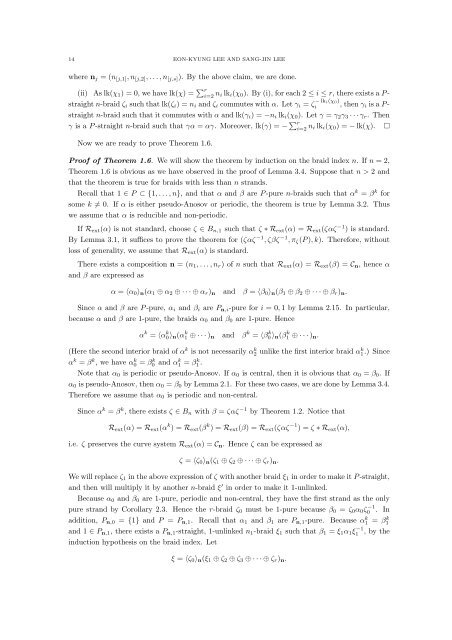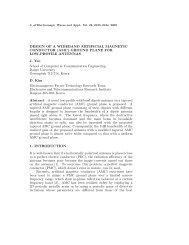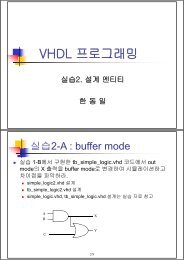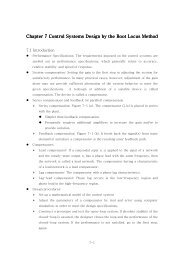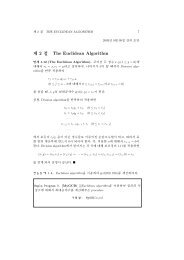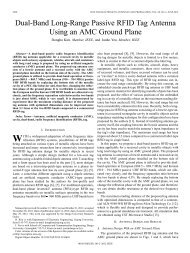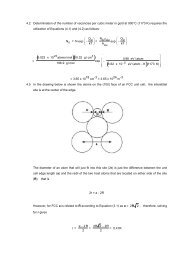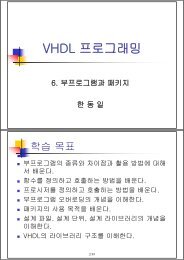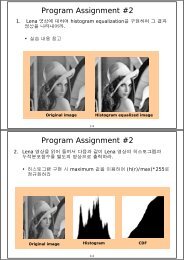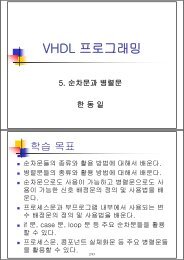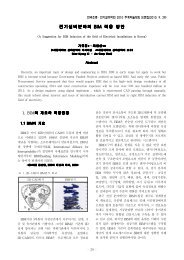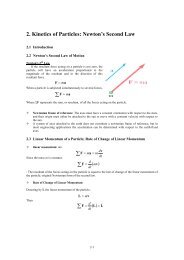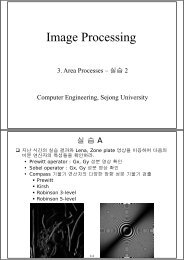UNIQUENESS OF ROOTS UP TO CONJUGACY FOR SOME ...
UNIQUENESS OF ROOTS UP TO CONJUGACY FOR SOME ...
UNIQUENESS OF ROOTS UP TO CONJUGACY FOR SOME ...
Create successful ePaper yourself
Turn your PDF publications into a flip-book with our unique Google optimized e-Paper software.
14 EON-KYUNG LEE AND SANG-JIN LEE<br />
where n j = (n [j,1] , n [j,2] , . . . , n [j,s] ). By the above claim, we are done.<br />
(ii) As lk(χ 1 ) = 0, we have lk(χ) = ∑ r<br />
i=2 n i lk i (χ 0 ). By (i), for each 2 ≤ i ≤ r, there exists a P -<br />
straight n-braid ζ i such that lk(ζ i ) = n i and ζ i commutes with α. Let γ i = ζ − lk i(χ 0 )<br />
i , then γ i is a P -<br />
straight n-braid such that it commutes with α and lk(γ i ) = −n i lk i (χ 0 ). Let γ = γ 2 γ 3 · · · γ r . Then<br />
γ is a P -straight n-braid such that γα = αγ. Moreover, lk(γ) = − ∑ r<br />
i=2 n i lk i (χ 0 ) = − lk(χ). □<br />
Now we are ready to prove Theorem 1.6.<br />
Proof of Theorem 1.6. We will show the theorem by induction on the braid index n. If n = 2,<br />
Theorem 1.6 is obvious as we have observed in the proof of Lemma 3.4. Suppose that n > 2 and<br />
that the theorem is true for braids with less than n strands.<br />
Recall that 1 ∈ P ⊂ {1, . . . , n}, and that α and β are P -pure n-braids such that α k = β k for<br />
some k ≠ 0. If α is either pseudo-Anosov or periodic, the theorem is true by Lemma 3.2. Thus<br />
we assume that α is reducible and non-periodic.<br />
If R ext (α) is not standard, choose ζ ∈ B n,1 such that ζ ∗ R ext (α) = R ext (ζαζ −1 ) is standard.<br />
By Lemma 3.1, it suffices to prove the theorem for (ζαζ −1 , ζβζ −1 , π ζ (P ), k). Therefore, without<br />
loss of generality, we assume that R ext (α) is standard.<br />
There exists a composition n = (n 1 , . . . , n r ) of n such that R ext (α) = R ext (β) = C n , hence α<br />
and β are expressed as<br />
α = 〈α 0 〉 n (α 1 ⊕ α 2 ⊕ · · · ⊕ α r ) n and β = 〈β 0 〉 n (β 1 ⊕ β 2 ⊕ · · · ⊕ β r ) n .<br />
Since α and β are P -pure, α i and β i are P n,i -pure for i = 0, 1 by Lemma 2.15. In particular,<br />
because α and β are 1-pure, the braids α 0 and β 0 are 1-pure. Hence<br />
α k = 〈α k 0〉 n (α k 1 ⊕ · · · ) n and β k = 〈β k 0 〉 n (β k 1 ⊕ · · · ) n .<br />
(Here the second interior braid of α k is not necessarily α k 2 unlike the first interior braid α k 1.) Since<br />
α k = β k , we have α k 0 = β k 0 and α k 1 = β k 1 .<br />
Note that α 0 is periodic or pseudo-Anosov. If α 0 is central, then it is obvious that α 0 = β 0 . If<br />
α 0 is pseudo-Anosov, then α 0 = β 0 by Lemma 2.1. For these two cases, we are done by Lemma 3.4.<br />
Therefore we assume that α 0 is periodic and non-central.<br />
Since α k = β k , there exists ζ ∈ B n with β = ζαζ −1 by Theorem 1.2. Notice that<br />
R ext (α) = R ext (α k ) = R ext (β k ) = R ext (β) = R ext (ζαζ −1 ) = ζ ∗ R ext (α),<br />
i.e. ζ preserves the curve system R ext (α) = C n . Hence ζ can be expressed as<br />
ζ = 〈ζ 0 〉 n (ζ 1 ⊕ ζ 2 ⊕ · · · ⊕ ζ r ) n .<br />
We will replace ζ 1 in the above expression of ζ with another braid ξ 1 in order to make it P -straight,<br />
and then will multiply it by another n-braid ξ ′ in order to make it 1-unlinked.<br />
Because α 0 and β 0 are 1-pure, periodic and non-central, they have the first strand as the only<br />
pure strand by Corollary 2.3. Hence the r-braid ζ 0 must be 1-pure because β 0 = ζ 0 α 0 ζ0 −1 . In<br />
addition, P n,0 = {1} and P = P n,1 . Recall that α 1 and β 1 are P n,1 -pure. Because α1 k = β1<br />
k<br />
and 1 ∈ P n,1 , there exists a P n,1 -straight, 1-unlinked n 1 -braid ξ 1 such that β 1 = ξ 1 α 1 ξ1 −1 , by the<br />
induction hypothesis on the braid index. Let<br />
ξ = 〈ζ 0 〉 n (ξ 1 ⊕ ζ 2 ⊕ ζ 3 ⊕ · · · ⊕ ζ r ) n .


